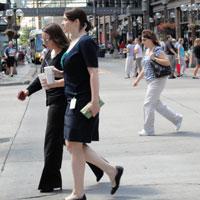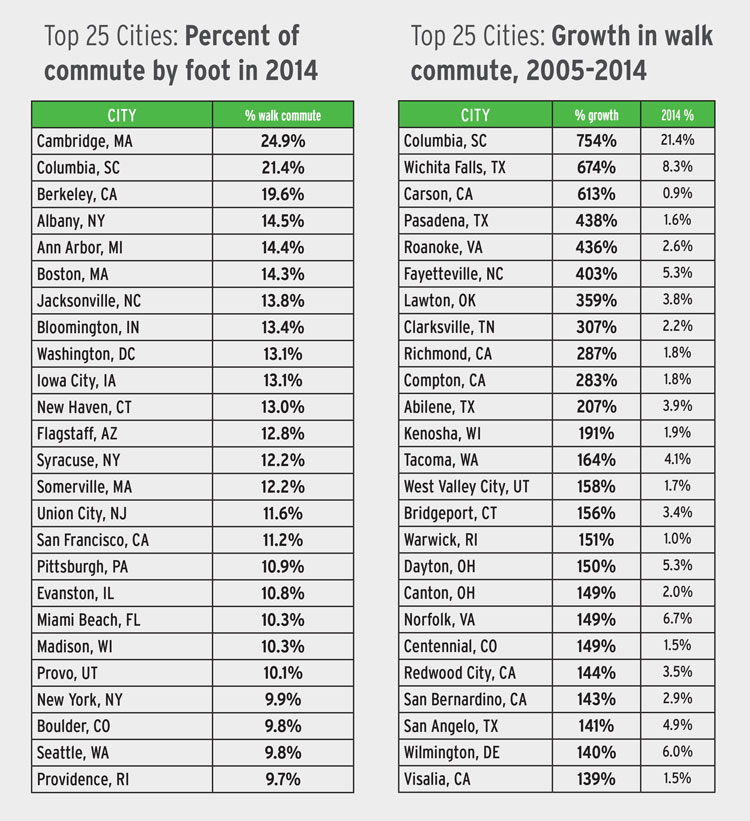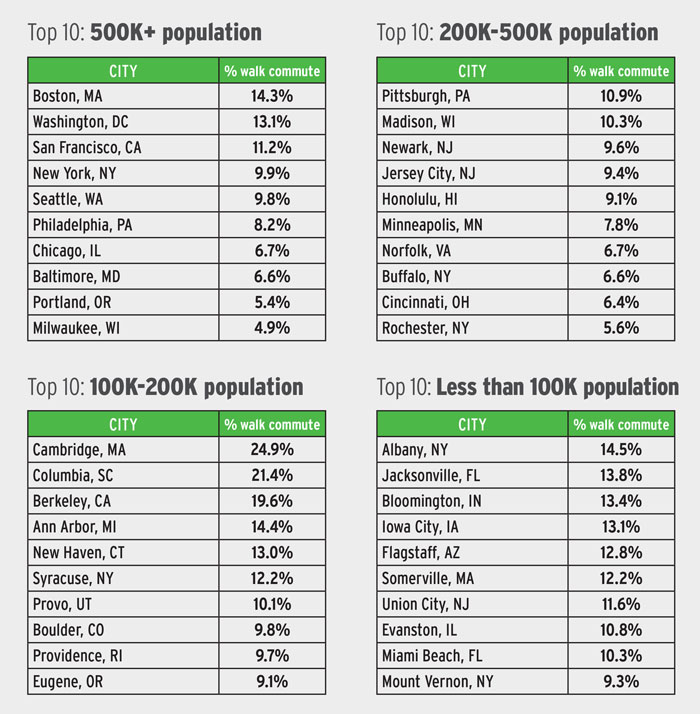 Here at the Alliance, we believe in the power of data. That's why we produce a biennial Benchmarking Report that compiles key numbers on biking and walking in the United States. One of the data sources we draw on is the American Community Survey, which released its latest "journey to work" estimates last month.
Here at the Alliance, we believe in the power of data. That's why we produce a biennial Benchmarking Report that compiles key numbers on biking and walking in the United States. One of the data sources we draw on is the American Community Survey, which released its latest "journey to work" estimates last month.
What are the top cities for active commuting? The League of American Bicyclists just released its deep dive into the cycling data today — and we partnered with them to add a dose of walking to their Where We Ride report.
First, let's start from the top. The ACS estimates that more than 4 million people walked to work regularly in 2014. That comprised 2.75% of all workers — a 10% increase from 2005.

Fortunately, there are plenty of cities that exceed those percentages — by a longshot. With our partners at the League, we looked at the top 25 cities for 1) the percentage of walking commuters and 2) the growth in walking commuters. Here's what we found.

Understanding that walkability is influenced by many factors, including land use and population density, we also broke it down by city size. Here are the top 10 from each of our brackets.

Certainly there are limitations to the ACS data (see below), but it's also a helpful guide in tracking our progress toward creating a truly multi-modal transportation system that gives residents with authentic mobility choices. As the U.S. Surgeon General emphasized in his Call to Action to Promote Walking and Walkable Communities last month, it's critical to the success of the nation that we find ways to integrate physical activity back into our lives — and walking or biking to work can play a key role in reaching that goal.
We know Alliance member organizations across the country, from Walk San Francisco to Walk Boston, are doing the critical work that is empowering more people to get out and walk, whether it's to get to work or get some exercise. We look forward to continuing to highlight their tremendous work — hint: read this post from last week on how WalkSF is partnering with public health to advance Vision Zero — and are excited to release our next Benchmarking Report in just a few months!
Read much more on in the League's new report and join the League and Alliance as we discuss the report during a #BikeChat on Twitter this Friday at 2 p.m. Eastern.
About the Data Source
The data in this blog and the Where We Ride report is based on estimates provided by the American Community Survey. Each year, one in every 38 U.S. households receives an invitation to complete the ACS. (You can learn more about the ACS process here) There are at least two limitations to the data: 1) it only measures how someone “usually” gets to work in the “last week” before the question was asked, and 2) it only captures the mode used for the most distance. These limitations mean that occasional bike or walk commuters and multimodal commuters who predominantly use transit are unlikely to be captured by ACS data.This report relies on 2014 1-year estimates and other 1-year estimates to facilitate change-over-time comparisons. There are margins of error for every data sample, ACS included. Because of the limits of the sample size, some of the margins of error are considerable.

